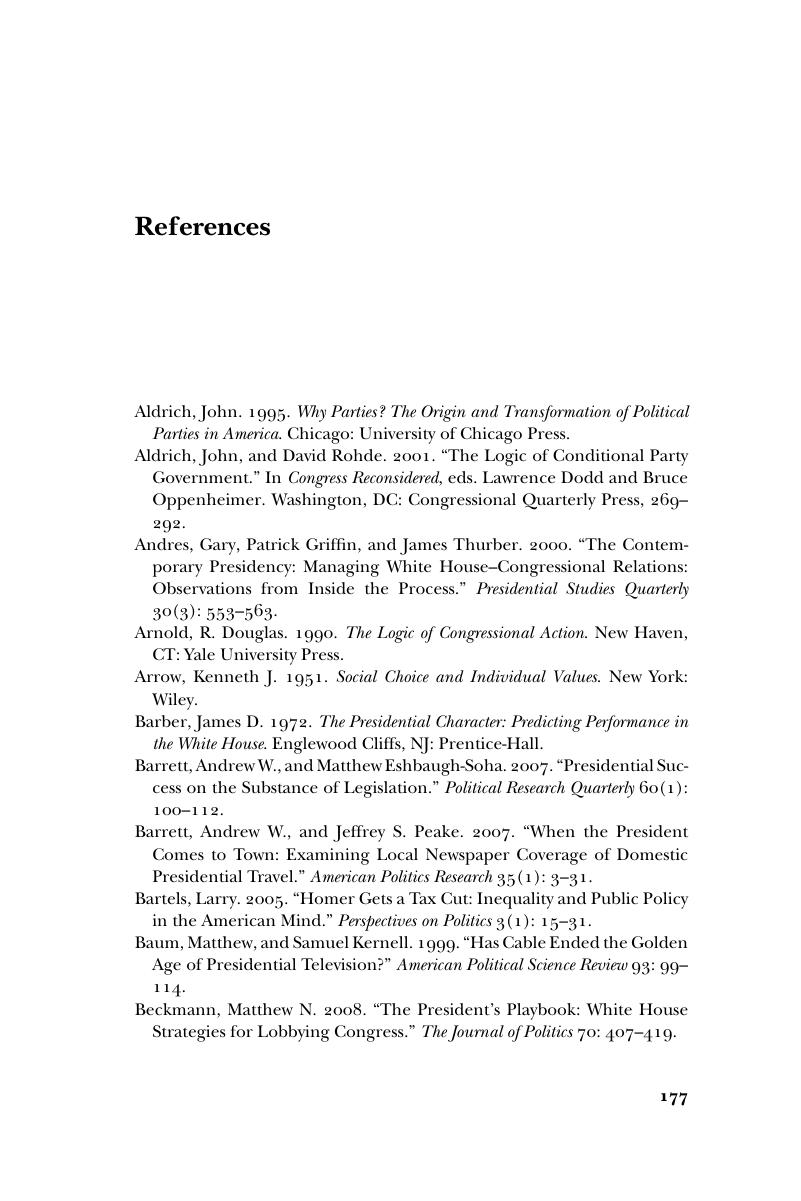Book contents
- Frontmatter
- Contents
- Dedication
- Figures
- Tables
- Acknowledgments
- 1 Introduction
- 2 A Theory of Positive Presidential Power
- 3 Case Study: Pushing President Bush's 2001 Tax Cut
- 4 Winning Key Votes, 1953–2004
- 5 Signing New Laws, 1953–2004
- 6 The Practice and Potential of Presidential Leadership
- Appendix: Archival Study Technical Details
- References
- Index
- References
References
Published online by Cambridge University Press: 05 June 2012
- Frontmatter
- Contents
- Dedication
- Figures
- Tables
- Acknowledgments
- 1 Introduction
- 2 A Theory of Positive Presidential Power
- 3 Case Study: Pushing President Bush's 2001 Tax Cut
- 4 Winning Key Votes, 1953–2004
- 5 Signing New Laws, 1953–2004
- 6 The Practice and Potential of Presidential Leadership
- Appendix: Archival Study Technical Details
- References
- Index
- References
Summary

- Type
- Chapter
- Information
- Pushing the AgendaPresidential Leadership in US Lawmaking, 1953–2004, pp. 177 - 186Publisher: Cambridge University PressPrint publication year: 2010



